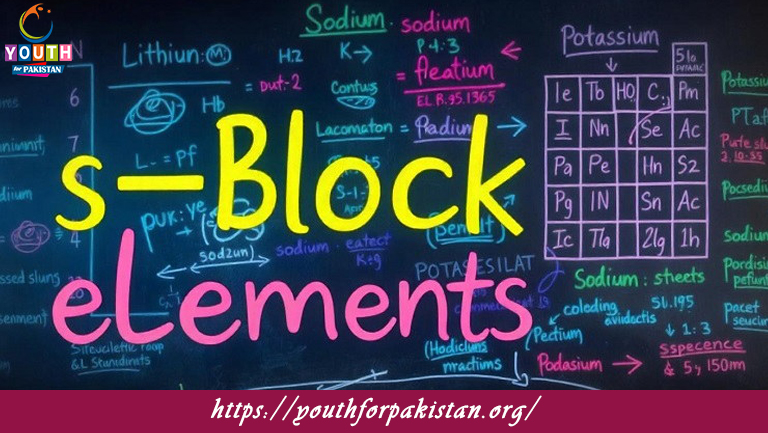S And P Block Elements Electronic Configuration MDCAT Quiz

S And P Block Elements Electronic Configuration MDCAT Quiz; Understanding how the electrons are distributed in the outermost shells of atoms and how this influences their chemical properties and reactivity is very important. The study of the electronic configuration for elements in the s and p blocks is very important in answering questions in the MDCAT Quiz regarding periodic trends, atomic structure, and chemical bonding.
H2: Electronic Configuration of S and P Block Elements
The s block elements comprise the alkali metals (Group 1) and alkaline earth metals (Group 2), while the p block elements comprise groups 13 to 18 of the periodic table. These elements have their valence electrons in the s and p orbitals, respectively, and their electronic configurations follow the Aufbau principle, Hund’s rule, and the Pauli exclusion principle.
s Block Elements: The s block consists of Group 1 and Group 2 elements. In Group 1 (alkali metals), the electronic configuration of elements like sodium (Na) is [Ne] 3s¹, indicating that the outermost electron is in the 3s orbital. In Group 2 (alkaline earth metals), elements like magnesium (Mg) have the electronic configuration [Ne] 3s², with two electrons in the 3s orbital.
p Block Elements: The p block comprises elements from Group 13 to Group 18. The outermost electrons of these elements are present in the p orbitals. For instance, in Group 13, boron (B) has an electronic configuration of [He] 2s² 2p¹, where one electron is in the 2p orbital. Similarly, in Group 17, chlorine (Cl) has an electronic configuration of [Ne] 3s² 3p⁵, where five electrons are in the 3p orbital.
H3: Electronic Configuration of S and P Block Elements Quiz
The MDCAT Quiz on Electronic Configuration of S and P Block Elements is designed to test the ability of students to write electronic configurations for different elements, identify trends in electron distribution, and predict chemical behavior based on the configuration. Students may be asked to provide the electronic configuration for elements like lithium (Li), oxygen (O), and sulfur (S), and explain how the configuration influences their chemical properties, such as their reactivity and ability to form bonds. This quiz will also assess the understanding of periodic trends such as atomic size, ionization energy, and electronegativity.
H2: Understanding Periodic Trends through Electronic Configuration
The electronic configuration of the s and p block elements helps explain various periodic trends that are essential for MDCAT preparation, including atomic size, ionization energy, electronegativity, and electron affinity. For instance:
Atomic Size: The atomic size generally decreases across a period from left to right due to the increasing effective nuclear charge. As more electrons are added to the same energy level, they get drawn closer to the nucleus, resulting in a smaller atomic radius.
Ionization Energy: Ionization energy increases across a period from left to right because the nuclear charge increases, making it harder to remove an electron. Conversely, ionization energy decreases down a group as the distance between the nucleus and the outermost electron increases.
Electronegativity: It increases across a period due to the increasing nuclear charge and decreases down a group due to the increase in atomic size and the shielding effect of inner electrons.
H3: Free Flashcard for S and P Block Elements Electronic Configuration
MDCAT students may use the Free Flashcard on this topic to reinforce their understanding of the electronic configuration of s and p block elements. The flashcards summarize the electronic configurations of the elements in both the s and p blocks, bringing forth the trends and key examples. Going through the flashcards regularly will help students get better at writing and understanding the electronic configurations of different elements. This is very good for quick revision before any exam and ensuring students are well-prepared for related questions on electronic configuration in the MDCAT exam.
Experience the real exam environment with our expertly designed collection of over 25,000 MCQs MDCAT Mock Tests.






